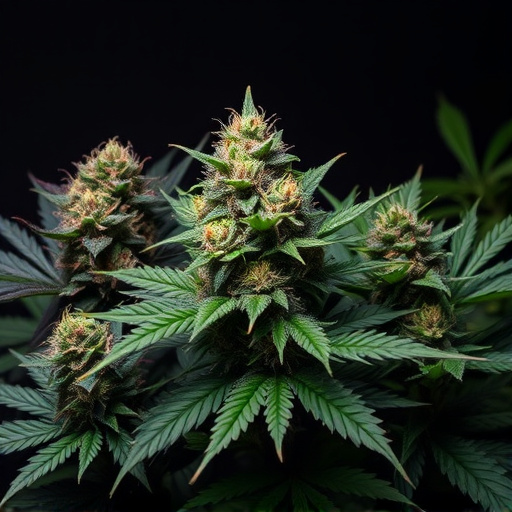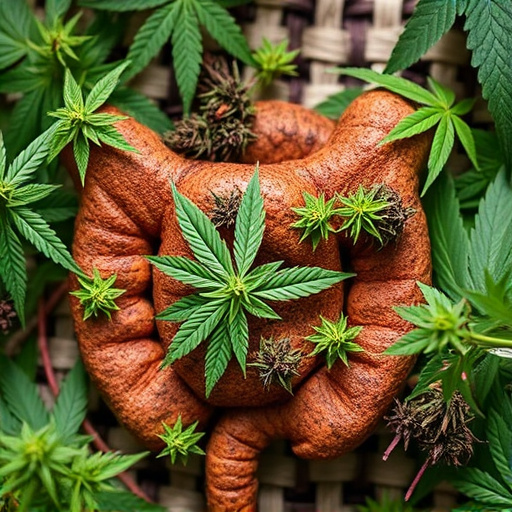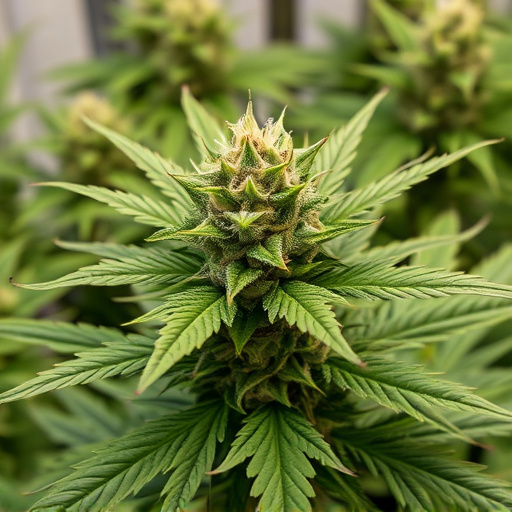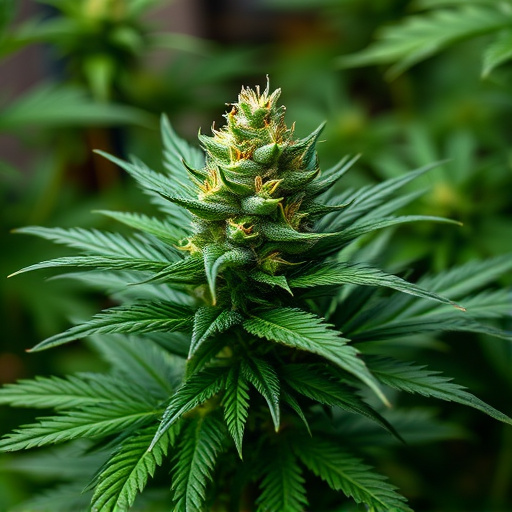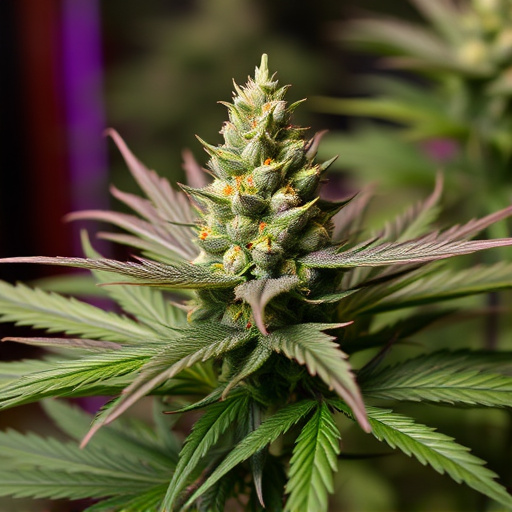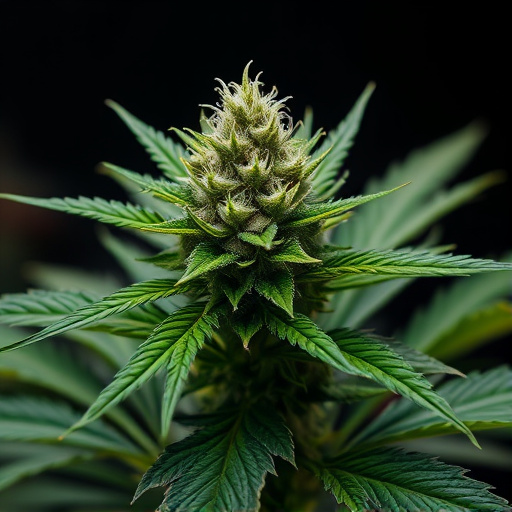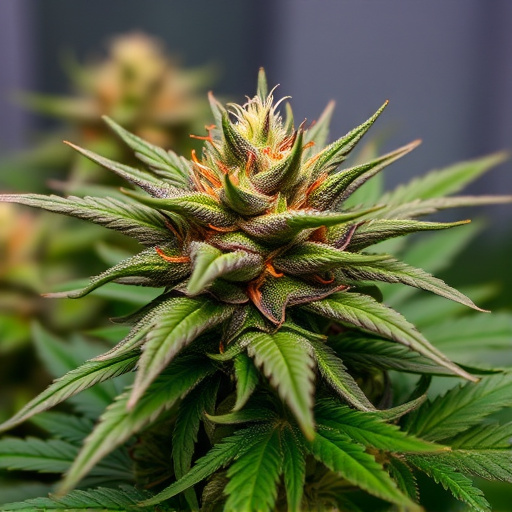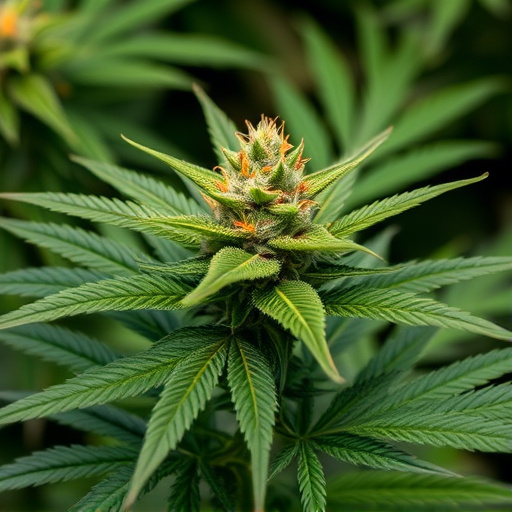The "munchies," associated with cannabis consumption, are linked to the interaction of cannabinoids, particularly CBD in high CBD cannabis strains, with our body's endocannabinoid system (ECS), which regulates hunger and satiety. These cannabinoids bind to brain and body receptors, potentially leading to increased appetite or altered food preferences. Understanding this mechanism offers insights into managing overeating disorders using high CBD strains as a novel treatment strategy, providing an alternative approach for those seeking to control hunger.
“Unraveling the science behind ‘munchies’—the universal desire for snacking after cannabis consumption—is a fascinating journey into the complex interplay of cannabinoids and our appetite. This article delves into how specific compounds, notably high CBD cannabis strains, can suppress hunger pangs and cravings. We explore scientific studies that decipher the mechanisms behind this phenomenon, offering insights into the effects of cannabinoids on the brain’s appetite-regulating centers. By understanding these processes, we can better appreciate the unique relationship between cannabis and our culinary desires.”
- Understanding the Role of Cannabinoids in Appetite Regulation
- The Impact of High CBD Strains on Hunger and Cravings
- Scientific Insights into the Munchies Phenomenon and Its Mechanisms
Understanding the Role of Cannabinoids in Appetite Regulation

The science behind the munchies, often associated with cannabis consumption, delves into the complex interplay between cannabinoids and our appetite regulation system. Cannabinoids, notably found in high CBD cannabis strains, interact with our endocannabinoid system (ECS), which plays a crucial role in maintaining homeostasis within the body, including controlling hunger and satiety.
When we consume cannabis, these cannabinoids bind to receptors in the brain and other parts of the body, influencing various physiological processes. High CBD strains, known for their potential therapeutic benefits, can modulate the activity of these receptors, potentially leading to increased appetite or changes in food preferences. This effect is one of many reasons why cannabis users often report enhanced hunger—the so-called “munchies.” Understanding this biological mechanism sheds light on both the experiences of regular cannabis consumers and the development of novel treatments for conditions involving appetite regulation.
The Impact of High CBD Strains on Hunger and Cravings
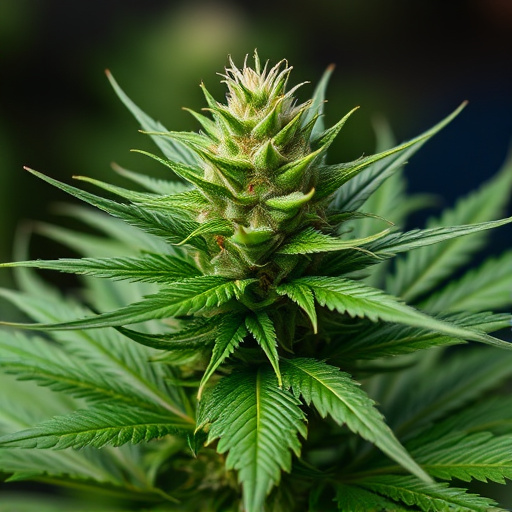
High CBD cannabis strains have gained attention for their potential impact on hunger and cravings, offering a unique approach to managing the so-called “munchies.” Unlike high THC (tetrahydrocannabinol) varieties known for inducing intense appetite, high CBD strains are believed to have the opposite effect. CBD, or cannabidiol, is a non-psychoactive compound that interacts with the endocannabinoid system in our bodies, which plays a significant role in regulating hunger and metabolism.
Research suggests that CBD can modulate the activity of certain receptors in this system, potentially suppressing appetite and reducing cravings. This makes high CBD strains an intriguing option for individuals seeking to control their eating habits or manage conditions like overeating disorders. The subtle yet effective influence of these strains on hunger pangs could be a game-changer for those looking to maintain a healthy relationship with food.
Scientific Insights into the Munchies Phenomenon and Its Mechanisms
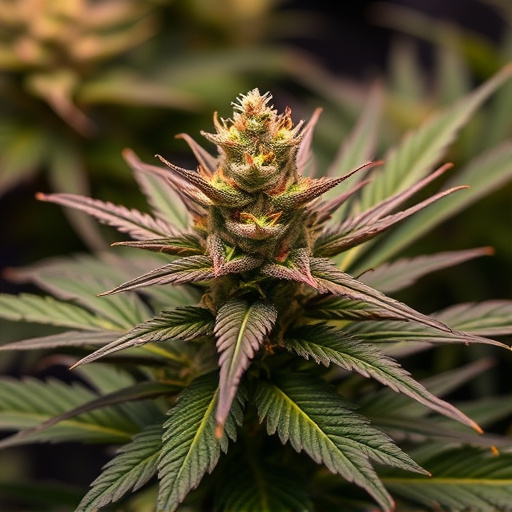
The “munchies,” a phenomenon where individuals experience intense cravings for food, especially after consuming cannabis, has intrigued scientists and researchers for years. Recent scientific insights into this phenomenon have shed light on its complex mechanisms, offering a deeper understanding of how cannabis interacts with our bodies to stimulate appetite. Studies suggest that the effects of high CBD (cannabidiol) cannabis strains play a significant role in inducing the munchies. CBD, known for its potential therapeutic benefits, has been found to interact with the endocannabinoid system, which regulates various physiological processes, including hunger and satiety. When consumed, these strains may activate specific receptors in the brain and body, leading to increased appetite and the characteristic desire to eat.
Furthermore, the endocannabinoid system’s involvement in homeostatic regulation suggests that cannabis can disrupt these balance mechanisms, resulting in overeating. Research indicates that the munchies are not merely a psychological effect but a physiological response, with potential implications for both recreational users and those exploring medical cannabis for appetite-related conditions. Understanding the science behind the munchies phenomenon provides valuable insights into the complex relationship between cannabis consumption and human biology.
In understanding the science behind the munchies, we’ve explored how cannabinoids influence appetite regulation and the specific effects of high CBD cannabis strains on hunger and cravings. The complex interplay between these compounds reveals intriguing insights into the mechanisms driving snack-focused desires. Research continues to shed light on these processes, with high CBD cannabis strains emerging as potential tools for managing both appetite and overall well-being. By delving into these scientific discoveries, we can gain a better understanding of how these natural substances interact with our bodies, potentially leading to novel approaches in nutrition and healthcare.
